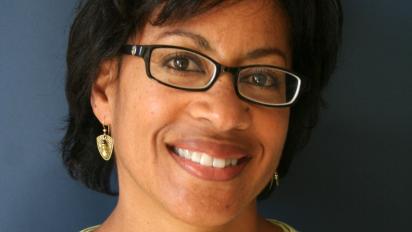NCSE Pursues the Gold Standard for Science Lessons

There’s no shortage of science lessons and activities on the web. A search of “science” at the popular Teachers Pay Teachers site, for instance, returns 750,000+ results. Narrowing that search by adding “NGSS” (the Next Generation Science Standards) still results in 18,000 possibilities. So how do teachers sifting through all these lessons and activities ensure the quality of what they hope to teach their students?
One way — arguably the best way — is to choose a curriculum that has been vetted by an expert peer-review panel that applies a rubric with relevant and substantive criteria to determine how well lessons and units are designed. And, given the wide use of the NGSS, such a rubric will include assessing how well lessons and units correspond with those standards.
This is exactly why the National Center for Science Education decided to submit its lesson sets to such a rigorous vetting process. Starting in late 2022, NCSE has been preparing one of its lessons and activities for submission to the NextGenScience Peer Review Panel (PRP) through NextGenScience at WestEd in the hopes that it will earn an NGSS Design Badge — a digital badge, considered the gold standard for science instructional materials, which assures anyone who comes across it that it is of high quality.
Designed with the NGSS in mind
The NCSE lesson sets were designed with the NGSS in mind. Today, 20 states and the District of Columbia have adopted the NGSS, while 25 states have used the NGSS-related recommendations in the National Research Council’s A Framework for K–12 Science Education to develop their own standards. The NGSS define not only what students should be learning but also how teachers should be teaching, emphasizing inquiry-based learning centered on investigating phenomena and designing solutions. Director of Teacher Support Lin Andrews worked with our team of Teacher Ambassadors to base each of the lesson sets on this style of learning, ultimately creating lesson sets that are aligned with the NGSS.
However, any curriculum developer can claim that a resource is aligned to the NGSS — that doesn’t mean that the resource is a quality resource. Many science resources use alignment tables to highlight which activities align to different aspects of the NGSS. Other resources rely on an in-house evaluation using the Educators Evaluating the Quality of Instructional Materials (EQuIP) Rubric for Science, the same rubric used by the NextGenScience Peer Review Panel (PRP) to award its design badges. This rubric is commonly employed by teachers and administrators to independently evaluate resources they are interested in; by providing a completed rubric, publishers are effectively allowing interested stakeholders to skip their own evaluation. However, because all these methods are completed by the curriculum designers, none are independently verified.
In addition, a growing body of evidence shows that when curriculum that is standards-based, rigorous, and easy to use is employed in the classroom, students see higher gains in their learning. Science curricula that meet these standards are considered to be High-Quality Instructional Materials (HQIM), and demand is increasing at every level of the education system — state, district, and school — for teachers to use High-Quality Instructional Materials in their classrooms. So it’s important to NCSE that teachers can verify that our lesson sets are not only aligned with but also designed for the NGSS in the way HQIM should be.
Once materials are submitted in pursuit of an NGSS Design Badge, the PRP completes individual assessments of the materials using the EQuIP Rubric. After completing their assessments, the PRP will review their findings, then compile the findings into a report that is shared with the submitter. The PRP assigns one of three scores: Example of high-quality NGSS design (E), Example of high-quality NGSS design if Improved (E/I), or Quality Work in Progress. Materials that earn an E/I are provided with feedback in order to improve the quality of the materials and resubmit them for reevaluation. Materials that earn an E are eligible for an NGSS Design Badge. Of all the materials reviewed by the PRP, only 3% have achieved an E rating and the coveted NGSS Design Badge.
A lengthy and costly process
Achieving an NGSS Design Badge is a lengthy and costly process that requires a significant amount of preparation and work. NCSE therefore decided to focus on submitting only one lesson set at this time. We used the EQuIP Rubric to identify the lesson set that would be the best fit and determined that It’s Time to Lose the Ladder had the most NGSS Design Badge factors already in place. We strengthened some areas of this lesson set, while also expanding it to meet as many NGSS high school standards regarding natural selection and evolution as possible.
In the months since the Supporting Teachers team began this project, we’ve made significant progress. The expanded storyline uses convergent evolution, as addressed in Teacher Ambassador Jeff Grant’s original Nature’s Doppelgängers activity, as the introductory anchoring phenomenon, giving students the opportunity to develop questions about natural selection, model building, and convergent evolution. We have also developed new activities, allowing students to explore their own misconceptions about evolution, then resolve them. This newest lesson features a scientific text, adapted for the classroom, which students use to obtain information about and explain complex concepts related to domestication and artificial selection. A fundamental aspect of science is the ability to read and interpret scientific papers, as outlined in the Science and Engineering Practices of the NGSS. When students engage with scientific literature and use the evidence from the text in order to explain complex ideas, they are developing this essential practice. This type of standards-aligned activity brings It’s Time to Lose the Ladder into better compliance with the EQuIP Rubric.
In addition to adding new activities meant to dig deeper into scientific concepts, we are working to include a range of assessments in order to ascertain whether students understand natural selection and evolution as well as whether their misconceptions about those topics have been resolved. One such assessment is based on the journal article “Ionizing radiation and melanism in Chernobyl tree frogs.” Students are asked to use the story of the Chernobyl tree frogs and real-world data in order to explain the role played by natural selection in the average coloration of tree frogs in and around Chernobyl. They are also asked to read two headlines regarding this discovery and determine which one is scientifically accurate and which one perpetuates a misconception, namely that individuals, as opposed to populations, evolve.
From writing to evaluation to revision, the entire process of obtaining an NGSS Design Badge can take over a year for just one lesson set. Each lesson must be designed with the standards in mind, weaving together opportunities for students to develop their ability to use the Science and Engineering Practices, apply the Crosscutting Concepts, and grapple with the Disciplinary Core Ideas — the three foundational dimensions of science learning found in the NGSS. In order to ensure that the submitted materials are closely aligned with the NGSS, NextGenScience West Ed employs multiple independent reviewers who examine the materials, consult with hopeful submitters, and arrive at a consensus decision. This means that in addition to committing a significant amount of time to try to ensure our materials are HQIM, there is also a substantial fee required to have them independently evaluated. We estimate that the cost of evaluating each lesson set will be approximately $5,000. (If the materials earn an E/I and require revisions, additional fees would be required.)
When teachers, administrators, and districts turn to our lesson sets to help students resolve their misconceptions, we want them to feel confident that they are using High-Quality Instructional Materials. We want teachers who use our resources to know that NCSE’s lesson sets not only convey the scientific concepts in evolution, climate change, and the nature of science, but also have been vetted by both educational and scientific experts. An NGSS Design Badge is the gold standard for science education instructional materials, signaling to stakeholders inside and outside of the classroom that our materials are evidence-based, rigorous, easy-to-use, and equitable. It is with your generous support that we will be able to achieve this lofty goal.






